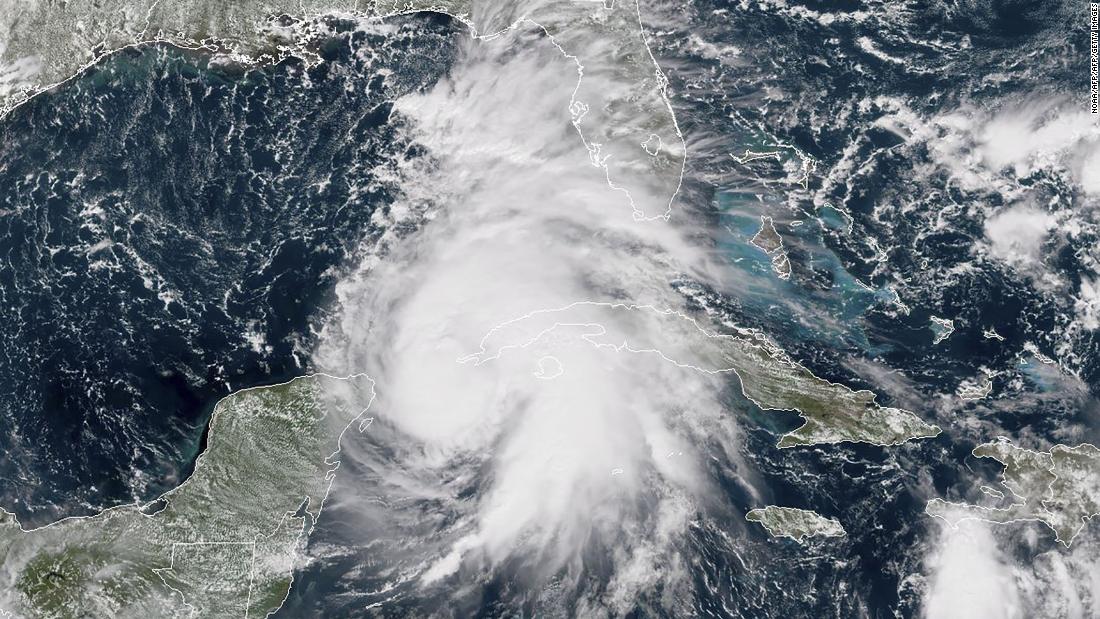
The process, known as "rapid intensification," took Michael from a tropical storm with sustained winds of 40 mph at mid-day Sunday to a Category 1 hurricane with sustained winds of 75 mph by mid-day Monday.
That was a 35 mph-increase over 24 hours. And Michael keeps picking up steam, becoming a Category 2 hurricane on Tuesday morning, with 100 mph winds.
A storm undergoes rapid intensification when its maximum sustained winds increase at least 35 mph in 24 hours or less, according to the National Hurricane Center. That's a jump of about two categories on the Saffir-Simpson scale, which grades hurricane strength from 1 to 5.
Perfect conditions are needed
While there isn't much definitive data on rapid intensification, a few key atmospheric ingredients help it occur, CNN meteorologist Michael Guy said. They're the same conditions that often emerge in the Atlantic basin between August and October.
Ocean water needs to be warm -- more than 86 degrees Fahrenheit is ideal -- with that heat extending beneath the surface. Upper level winds must be calm so they don't disrupt thunderstorm activity.
A storm's internal conditions also must be just right. A hurricane needs a way to ventilate, much like a car engine, so it can continue to process all of the fuel from the warm ocean water and use it to strengthen the storm.
Rapid intensification is rare
Because all those pieces must be in place, rapid intensification is rare, with just one or two Atlantic storms per year undergoing such an acceleration.
That said, most storms that reach the highest categories -- 3, 4 and 5 -- reach these intensities through rapid intensification. Indeed, 70% of Atlantic storms that hit that mark do so through rapid intensification, according to a 2016 study published in Nature Communications.
In 2015, Hurricane Patricia, one of the strongest storms ever recorded, went through one of the fastest and most drastic rapid intensification cycles, with winds increasing about 120 mph in 24 hours.
These storms are more dangerous
Storms that undergo rapid intensification tend to be more dangerous than other storms because they frequently end up as major hurricanes. Adding to the problem, the speed at which they strengthen allows for less warning time. This happened to those on the island of Dominica ahead of Hurricane Maria last year.
But it's notoriously hard to predict rapid intensification because forecast models fail to pick up on all the different variables that feed into it -- and because rapid intensification doesn't always happen when the variables are present.
For instance, forecast models did not predict the rapid intensification last year that made Harvey a Category 4 storm in such a short period before it hit the Texas coast.
No comments:
Post a Comment